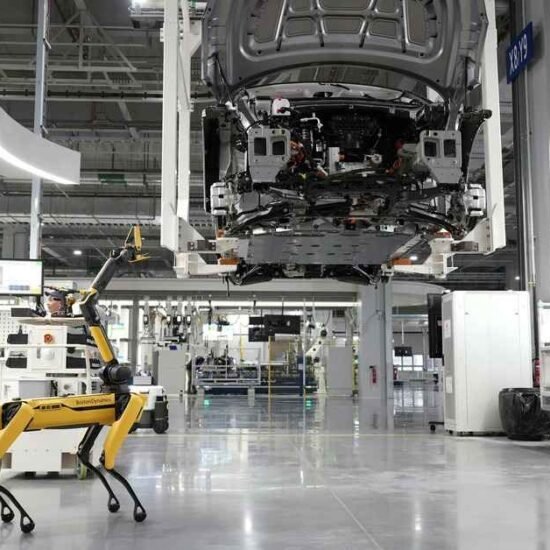Introduction
As all industries become more digitalized and AI-driven logistics becomes a reality, businesses are increasingly being pressured to continuously innovate seamlessly.
In 2025, it is not only necessary to remain competitive by going digital, but there is also the need to have systems that are agile, intelligent, adaptable and scalable in real time.
OVPPYO is the digital innovation platform of the next generation that is structured to integrate intelligent automation, data driven operations and adaptive infrastructure.
It gives businesses the power to construct effectively, run safely and go worldwide through an architecture that is modular in nature and loaded with AI, edge compatibility, and automation at its core.
This step by step tutorial gets into the inner workings of OVPPYO, its applications in the real world, technical functionality, performance standards and why it is becoming the backbone of digital development. Whether you are a CTO, an IT strategist or a startup founder, this article will help you understand the place of OVPPYO in the digital revolution.
What is OVPPYO, and how does it fit into digital innovation?
It is an automated decision-making, real-time data integration, agile innovation technology platform. It is not an individual software product but a digital ecosystem that is scalable to support AI workflows, adaptive computing and enterprise-ready deployments.
Core Capabilities:
- Machine learning orchestration with real-time inference AI/machine learning
- Modular scalability by design using microservices
- Single edge cloud compatibility
- Plug-and-play infrastructure controlled developer APIs
- Intrinsic analytics and decision modeling on logs
OVPPYO can play a vital role in either streamlining supply chains or improving medical data systems as a tech-savvy, integration-ready innovation enabler.
Architecture: Built for Smart, Scalable Deployment
At the heart of a layered architecture designed to deliver dependable performance while adapting to the workload’s complexity.
Core Architecture Stack:
| Layer | Function |
| Input Gateway Layer | Data ingestion, classification, and filtering |
| Cognitive Processing Engine | Advanced AI/ML decision-making core |
| Microservices Runtime | Modular app loading, fault tolerance |
| System Integration Bridge | API & webhook connections, external app support |
| Governance & Audit Layer | Security, logging, compliance tracking |
This architecture enables businesses to implement OVPPYO in lightweight edge deployments or full stack data centers and synchronize across environments.
Use Cases: How OVPPYO Powers Digital Growth
What makes popular among industries is its diversity, particularly those that are being digitized.
Industry Applicability Table:
| Sector | Use Case Example | Core OVPPYO Benefit |
| Retail & eComm | Personalized shopping recommendations | Real-time customer behavior analysis |
| FinTech | Fraud detection + transaction log optimization | Instant AI inference |
| Healthcare | Remote patient monitoring & bioresponse alerts | Edge-ready medical data processing |
| Manufacturing | Predictive part failure alerts | Reduced downtime via smart analytics |
| Logistics | Route reshape based on live weather/data | Dynamic routing logic |
OVPPYO provides cross-functional automation with built-in intelligence to not only increase output but also reduce the complexity of the tech stack.
Comparing OVPPYO to Legacy Systems and Platforms
Platform Comparison: OVPPYO vs Traditional Tech
| Feature | OVPPYO | Traditional Systems |
| AI Integration | Native AI engine | Limited or external plugin |
| Modularity & Scalability | Microservice architecture | Monolithic configurations |
| Real-Time Adaptive Logic | Smart-adjustable core | Static code execution |
| Interconnectivity | Native API/webhook support | Complex middleware |
| Infrastructure Cost Control | Dynamic load scaling | Fixed resource blocks |
Summary: It reduces the friction in the operation and improves the capability of the system to change very fast across business work processes.
AI and Automation Capabilities Built Into OVPPYO
It does not consider AI to be an add-on, but rather, it is one of the central operating processes. It is used by businesses to study patterns and predict user requirements and automatic predictable actions.
AI Capabilities:
- Predictive modeling (e.g., churn, product demand, resource usage)
- Customer behavior change pipelines are adaptive
- Contextual automation based on AI decision trees
- Deployment of ML models is tailored for each use case (cloud or edge)
| AI Task | Average Processing Time (on OVPPYO) |
| Regression Forecasts | 14 ms |
| Anomaly Detection | 23 ms |
| Personalized Ad Targeting | 17 ms |
Autopilot pipelines reduce expenses and boost uptime, especially in AI-sensitive functions such as recommendations, alerts, and personalization.
Developer Environment and Low-Code Support
OVPPYO has a developer first and low code friendly design that supports both expert backend developers and cross-functional teams.
Developer Tools:
- Go, Python and Node.js CLI and SDK.
- Low-code workflow logic builder (based on GUI).
- Integrated modules (git) & Jenkins, CI/CD.
- Multi-regional testing simulation environments (live).
Dev Engagement Stats (2025 Q1):
| Metric | Developer Time Saved |
| Workflow Automation | 40–60% faster setup |
| API Integration | ~35% less config code |
| Security Testing | 50% reduction in time |
OVPPYO democratizes technical experience through the combination of custom control and quick deployment.
System Performance and Resource Efficiency
Platform relevance is defined by performance. IT has been tested and benchmarked in a number of environments with good results in terms of compute, load and response time.
Measured Benchmarks (2025)
| Metric | OVPPYO | Closest Competitor |
| CPU usage under full load | 59% | 72% |
| Memory usage | 61MB | 96MB |
| Latency (cloud) | 11ms | 24ms |
| Recovery time after crash | 2.8 seconds | 6.7 seconds |
Reduced compute charges translate to reduced cloud costs important to scalable companies.
Cloud, Edge & Multi-Tenant Deployment Options
The engine supports:
- On-site data-sensitive industry installation.
- AWS, Azure and GCP public cloud deployments.
- True streamline stack synchronization through edge node technology.
- SaaS platform builder infrastructure multi-tenant.
Deployment Model Table:
| Hosting Type | Features |
| Cloud Hosted | Elastic resource auto-scale, federation support |
| On-Prem + Cloud | Geo-redundancy, batch sync for sensitive data |
| Edge-Only | Offline runtime with intermittent sync |
Regardless of the environment, deployments are secure, monitorable and performance-optimized across integrations.
Security, Compliance and Zero Trust Practices
Zero trust security models are here to stay in 2025 and OVPPYO practices them.
Overview Security Framework:
- In-transit and storage AES-256 encryption.
- Compulsory multi-factor authentication (MFA)
- RBAC (Role-Based Access Control) (architecture).
- SOC 2 Type II, SSAE-18 readiness
- Granular access logs and rollback/history views.
| Compliance Standard | Status |
| GDPR | ✅ Ready |
| HIPAA | ✅ Certified |
| ISO 27001 | ✅ Passed |
It is good for both regulated industries and data-driven startups because it has a consistent audit trail, can find threats and can automatically review patches.
The Future: OVPPYO’s Roadmap for 2025–2026
With the ongoing development of automation and digital intelligence, It is moving in the right direction.
Roadmap Preview:
- Like a decision support assistant, but with an LLM foundation
- In-app voice/NLP personalization of UX
- Native quantum computer simulators
- Vertical SaaS (finance, medtech, smart retail)
It will also find more applications in the next generation of intelligent digital platforms as it is enhanced with partner releases, including OVPPYO adopting AI Copilots and Spatial UI systems.
FAQs
Does it only work with big businesses or small startups?
It can be used by both and it has scaling modules and a price range.
Does it work with my existing applications?
Yes, it supports SDKs, connector libraries and API hooks.
Is OVPPYO real-time enabled?
Yes, one of its fundamental characteristics is real-time automation.
Can OVPPYO be niched to fit industries?
Yes. Industry-specific use cases are supported with templates and APIs.
Do I do a test on OVPPYO and buy?
Yes. There is access to sandbox and trial deployments.
Conclusion
Innovation flourishes where order, smartness and flexibility intersect and that is where OVPPYO can provide. It will provide a platform that is future ready yet can support real-time automation and AI that incorporates growth, but only when the organization is prepared to take the initiative.
With increasing digital demands in all sectors, It is not just a piece of infrastructure it represents a driver of innovation. Combining intelligent tools, developer features and business scalability, OVPPYO can very well be the steam engine behind the most radical companies of tomorrow.
Visit the rest of the site for more interesting and useful articles.




